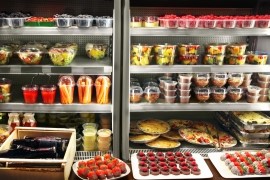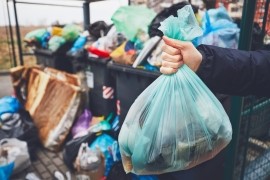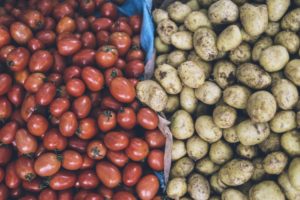My blog focuses on Financial Literacy/Money, Business/Entrepreneurship and Health/Wellness. Sanitation is critical for food businesses and can make or break them. The following contributed post is entitled, Why Food Businesses Can Never Ignore Sanitation.
* * *

Sanitation is one of those things that is so obvious from the outside, yet easily slips through the net on the inside. You’re running a food business and so everything revolves around your product & service. It’s your key focus – which means you’re thinking about making your food products taste nice, creating better food packaging, and so on. It’s too easy for you to get so caught up in this that you forget about the importance of sanitation.
Let this blog post serve as an important reminder!
Here’s why food businesses can never ignore sanitation and the dangers that come when you’re adhering to poor sanitation:
Maintaining FDA Compliance
If you operate a food business, you need to meet the FDA’s extremely strict hygiene standards. Failure to do so will mean it can easily shut your business down. This is true for all types of food businesses, especially food plants and manufacturing facilities. Businesses like these have even stricter standards to adhere to, so you need to employ a top food plant sanitation company to help you remain compliant.
Remaining compliant with FDA guidelines is often about small things like wearing PPE in the right places, washing your hands, and using sanitary storage equipment. However, it also requires deep and proper cleaning to ensure all of your work surfaces and equipment are sanitised after use. You must keep up with this to avoid losing your license and closing your business.
Avoiding Legal Issues With Customers
It’s entirely possible for a food business to obtain FDA compliance yet still fall afoul of sanitary discrepancies. All it takes is for a piece of raw chicken to contaminate another chopping board, and suddenly you risk spreading salmonella to customers.
This can happen – and it means you’ll face legal problems from angry customers. You could easily be sued because you made people ill, meaning you fork out lots of money in compensation. It doesn’t take an entrepreneurial expert to know that you can’t afford to be embroiled in constant legal battles like this. Focus on sanitation at all costs to avoid the problem.
Keeping A Good Reputation
What do you think happens when a food business is flagged for breaching FDA hygiene guidelines or gets sued for making customers sick? Or, what if the food business looks unsanitary and has a pest problem? It ruins that company’s reputation and means customers will never trust it again.
Sanitation is a simple way to make or break your reputation. Maintain high levels of good hygiene to build trust with customers and make them feel comfortable. This creates positive reviews and recommendations, which fuel your reputation further. Don’t let something as simple as poor hygiene and sanitation ruin your rep before you’ve had a chance to make a statement in the food industry.
The moral of the story is this: don’t lose sight of sanitation while running your food business. As important as it is to think about your products/services, you should always keep a firm focus on food hygiene and ensuring everything stays sanitary.




